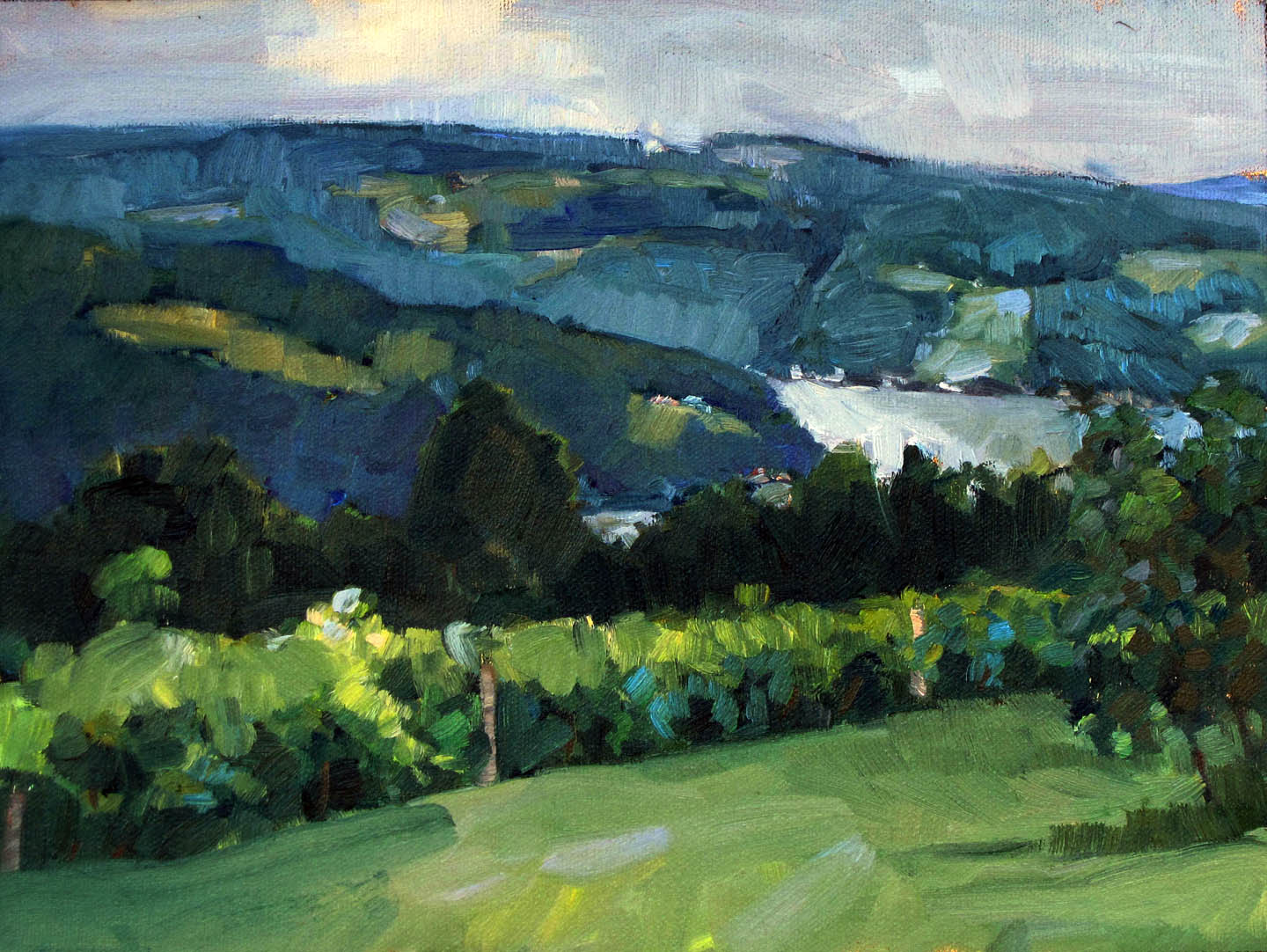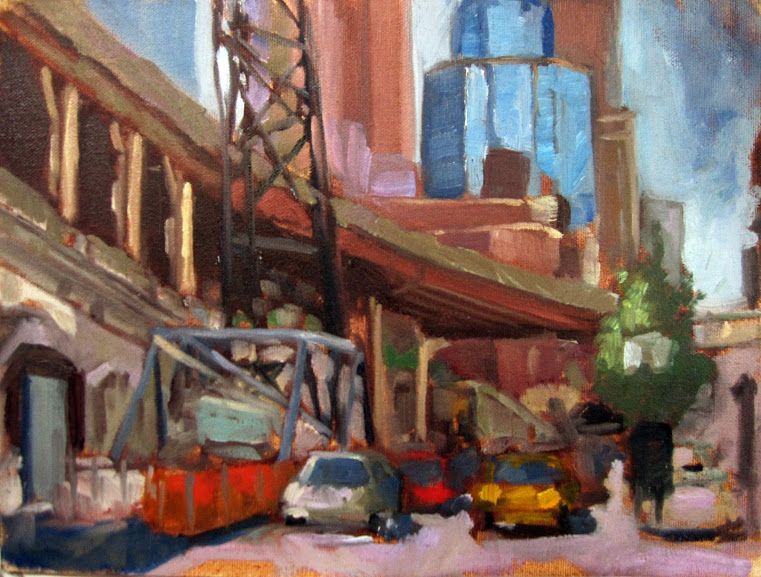In every important way, Canadians and Americans are indistinguishable. That artificial barrier, the border, makes our common life hard.
 |
| Poppy Balser’s weir painting sold at the opening bell. |
In 2012, the Canadian and US dollars were trading at close to par. Today, one Canadian dollar is worth just three bits (and a penny, but Canada no longer uses the penny). This isn’t the historical worst it’s been, but it’s close enough for discomfort.
The US dollar has also been weakening, but the Loonie has lagged even more. For both economies, this is in part because of central bank policies and in part because oil prices are down.
I benefited from the weak Canadian dollar when I crossed Canada last fall. The same dollar disparity hurt when I was trying to sell work in Canada.
 |
| Ed Buonvecchio painted the Cape D’or lighthouse. My photo doesn’t do the painting justice. |
We’d been told to price our work as usual by juror
Bill Rogers. Even if he hadn’t said it, it’s my usual practice. It’s unfair to collectors and galleries to hop around when you price your work.
I was unsure how to apply the exchange rate. I ended up leaving the work at its American tag price. Even that was too expensive. There were five American artists in the festival. We were terrifically expensive compared to our Canadian peers.
My painting of the Parrsboro light was distinctively Nova Scotian; I wanted to sell it there. I dropped it to half its American price. It sold for $400.
From that, the venue takes 40%. This is a legitimate commission, and one every serious artist is happy to pay. That leaves me with a check for $240.
 |
| Mary Sheehan Winn painted Partridge Island. |
But wait, there’s more. My bank is going to convert that and, assuming there are no additional currency fees, I will take home $181.25.
I know just enough about economics to understand that a strong American dollar hurts exports; a weak dollar helps exports. Growing up on the Niagara Frontier, I know there were years we went to Canada for gas and other years when Canadians came to the US to shop.
But I’ve never understood the exchange rate so personally.
 |
|
Rockies at Canmore, Alberta. Christopher Gorey, of Ingonish, Nova Scotia, is a new painter to me. This wasn’t his festival piece, but it’s a good example of his great touch with watercolor.
|
There was another disparity in pricing, one that affected only Canadian artists. Artists who sell more than $30,000 per year are required to collect something called the HST, or Harmonized Sales Tax. They have to tack 15% on to the ticket price of their work.
The only time American artists collect sales tax is when we sell paintings directly to collectors. When paintings are sold through events or galleries, it’s the venue’s responsibility. The Canadian system would take some getting used to.
 |
|
Marc Grandbois of L’Anse -St- Jean, Quebec City, is another painter I will keep track of. He caught the lowering sky over Two Islands beautifully.
|
Those of us who live along the border understand that in every important way, Canadians and Americans are indistinguishable. We have the same values, argue over the same disagreements, love the same landscape, drink the same coffee, shop at the same big-box stores, and (generally) speak the same language. NAFTA was supposed to make trading between us easier. In fact, between heightened border security and the disparity of our dollars, it’s harder than ever.
A pity, that.









